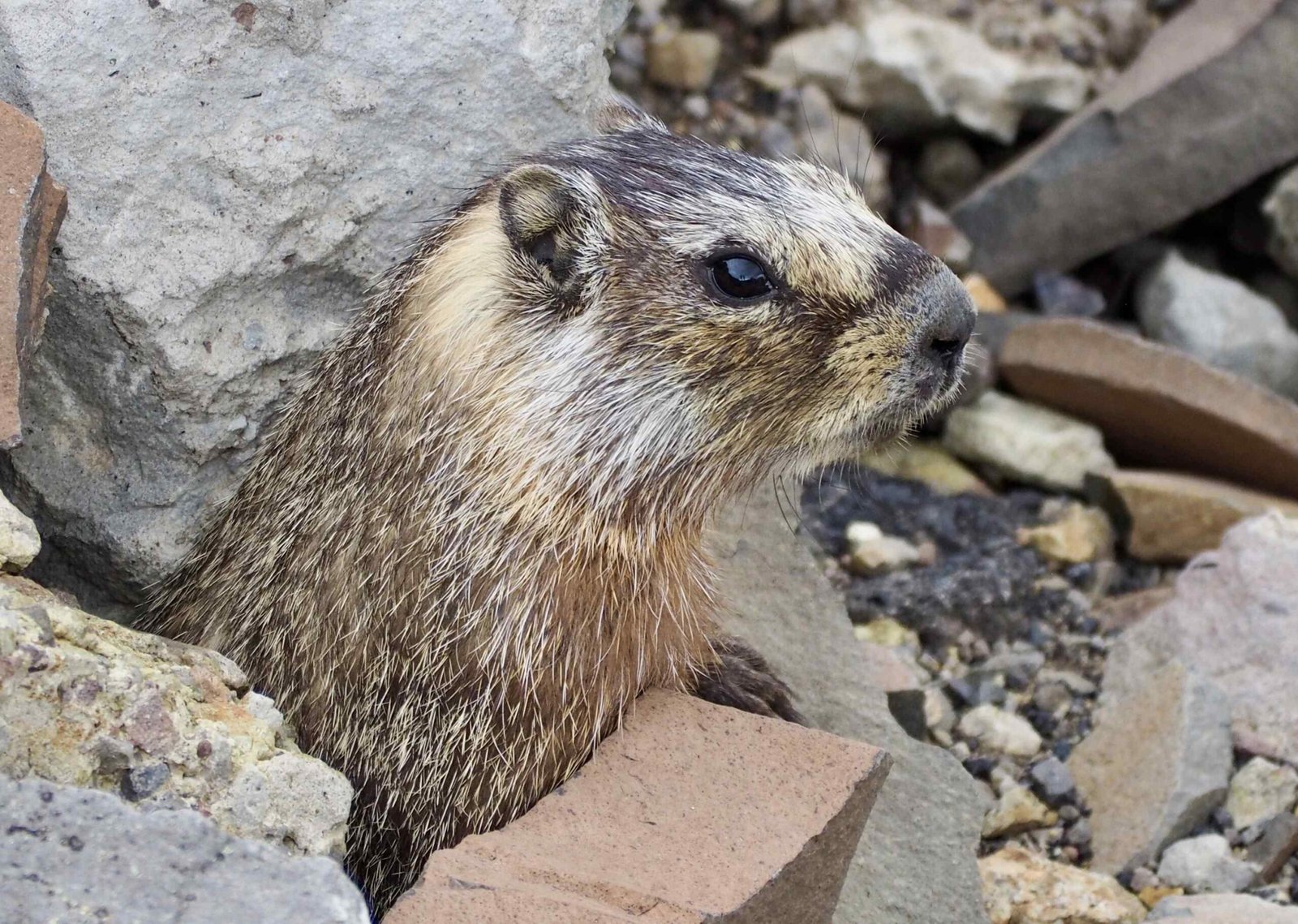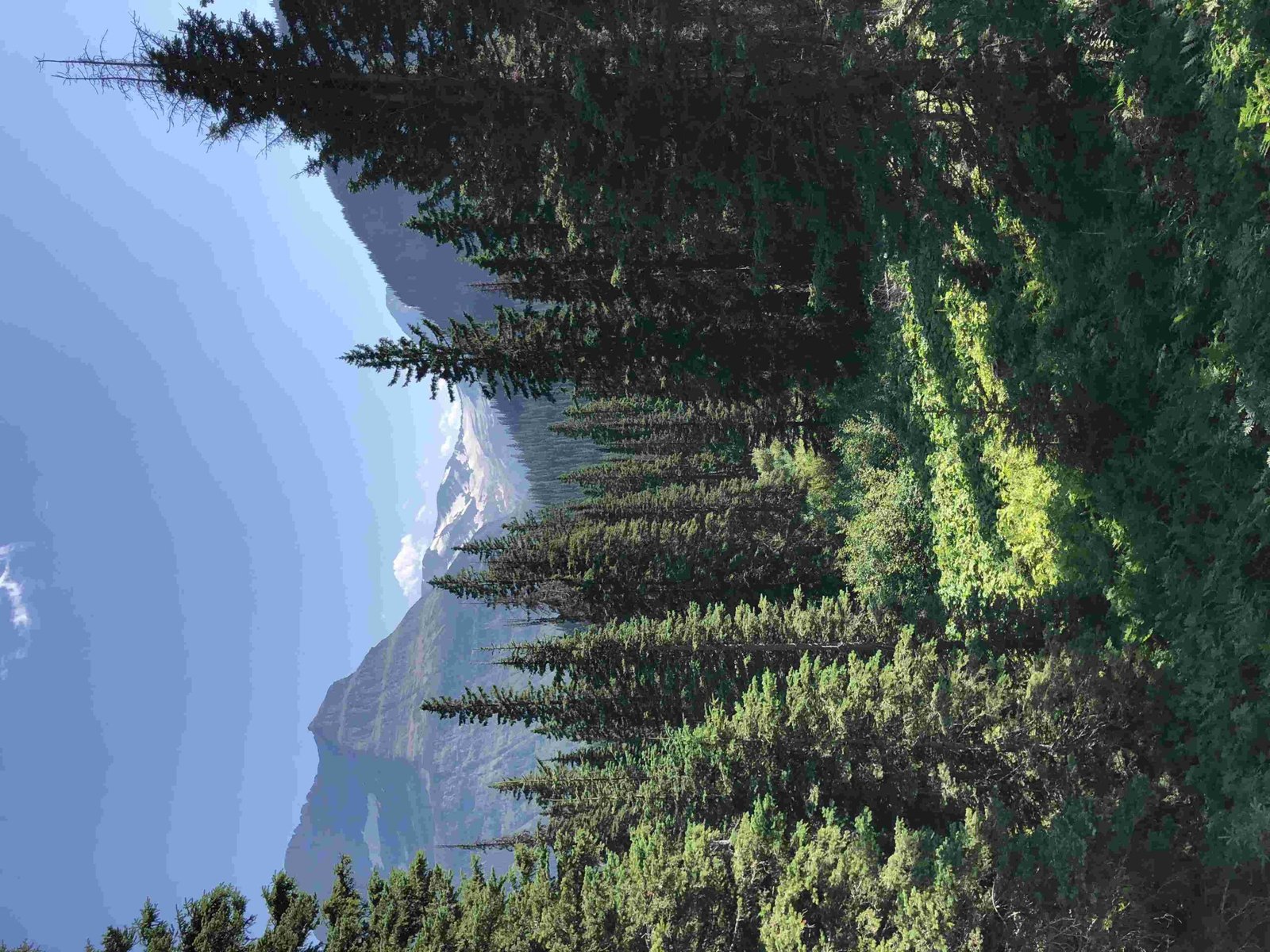The tree line in Glacier National Park marks the upper limit of tree growth, typically occurring between 7,000 to 8,000 feet elevation. This ecological boundary varies across the park due to diverse geography and climate. On the eastern side, the tree line is about 800 feet lower than on the western side. Key species at this elevation include subalpine fir, whitebark pine, Engelmann spruce, and alpine larch, each adapted to harsh high-altitude conditions.
What is the Elevation of the Tree Line in Glacier National Park?

The tree line, also known as timberline, in Glacier National Park varies significantly across different regions due to the park’s diverse topography and microclimates:
- Eastern side: Approximately 7,000 feet (2,134 meters)
- Western side: Approximately 7,800 feet (2,377 meters)
- Overall range: 7,000 to 8,000 feet (2,134 to 2,438 meters)
Factors influencing tree line elevation include:
- Exposure to wind and sun
- Soil composition
- Precipitation patterns
- Local temperature variations
It’s important to note that the tree line is not a sharp boundary but rather a gradual transition zone where trees become increasingly stunted and sparse as elevation increases.
Which Tree Species Thrive at the Tree Line?

Several tree species have adapted to the harsh conditions at the tree line in Glacier National Park:
- Subalpine Fir (Abies lasiocarpa)
- Height: Up to 80 feet tall
- Diameter: Up to 2 feet
-
Characteristics:
- Highly adaptable to shaded areas and cold, dry climates
- Often stunted and grows along the ground at higher altitudes
-
Whitebark Pine (Pinus albicaulis)
- Ecological role: Facilitates establishment of other tree species
-
Importance:
- Crucial for initiating tree islands at treeline sites
- Provides food source for wildlife
-
Engelmann Spruce (Picea engelmannii)
- Height: 75 to 120 feet tall
- Lifespan: Long-lived species
-
Habitat: Persists in upper elevation habitats
-
Alpine Larch (Larix lyallii)
- Location: Found at or near the upper treeline
- Preferred sites: North-facing cirques or slopes with persistent snowfields
- Distribution: Often forms isolated stands
These tree species play crucial roles in the high-altitude ecosystem:
- Provide food and shelter for wildlife
- Influence watershed hydrology
- Slow spring snowmelt
- Increase duration of summer runoff and streamflow
What are the Best Hiking Trails to Experience the Tree Line?
To experience the tree line in Glacier National Park, consider these popular hiking trails:
- Grinnell Glacier Trail
- Distance: 10.3 miles (16.6 km) round trip
- Difficulty: Strenuous
- Estimated time: 6-8 hours
-
Highlights:
- Grinnell Glacier
- Grinnell Lake
- Panoramic mountain vistas
-
Iceberg Lake Trail
- Distance: 9.3 miles (15 km) round trip
- Difficulty: Moderate to strenuous
- Estimated time: 5-7 hours
-
Highlights:
- Iceberg Lake
- Surrounding mountain peaks
- Alpine meadows
-
Highline Trail
- Distance: 7.6 miles (12.2 km) one way
- Difficulty: Strenuous
- Estimated time: 4-6 hours one way
- Highlights:
- Bird Woman Falls
- Granite Park Chalet
- Continuous views along the Continental Divide
| Trail Name | Distance | Difficulty | Estimated Time | Key Features |
|---|---|---|---|---|
| Grinnell Glacier | 10.3 miles RT | Strenuous | 6-8 hours | Glacier, lake, mountain views |
| Iceberg Lake | 9.3 miles RT | Moderate-Strenuous | 5-7 hours | Alpine lake, meadows |
| Highline | 7.6 miles one way | Strenuous | 4-6 hours one way | Continental Divide views, chalet |
How Do Seasonal Conditions Affect Access to the Tree Line?
Seasonal variations significantly impact accessibility and conditions at the tree line:
Summer (June to September)
- Best time for hiking
- Average temperatures: Mid-60s to mid-70s Fahrenheit (18-24°C)
- Pros:
- Clearer trails
- Warmer temperatures
- Cons:
- Crowded
- Possible residual snow on some trails
Spring (April to May) and Fall (October to November)
- Shoulder seasons with variable conditions
- Pros:
- Fewer crowds
- Beautiful foliage (especially in fall)
- Cons:
- Unpredictable weather (snow, rain)
- Muddy or snowy trails
Winter (December to March)
- Tree line largely inaccessible
- Average snowfall: Over 300 inches (762 cm) in some areas
- Conditions:
- Heavy snowfall
- Harsh temperatures
- Limited daylight hours
What Ecological Significance Does the Tree Line Hold?
The tree line in Glacier National Park serves several crucial ecological functions:
- Biodiversity Hotspot
- Transition zone between subalpine and alpine ecosystems
-
Supports unique plant and animal species adapted to extreme conditions
-
Climate Change Indicator
- Sensitive to temperature changes
-
Upward shift of tree line can indicate warming trends
-
Watershed Protection
- Trees at high elevations help stabilize soil
-
Reduce erosion and regulate water flow
-
Wildlife Habitat
- Provides food and shelter for various species
-
Critical for animals like grizzly bears, mountain goats, and ptarmigans
-
Carbon Sequestration
- High-altitude forests contribute to carbon storage
- Help mitigate climate change impacts
How Can Visitors Responsibly Explore the Tree Line?
To preserve the delicate ecosystem at the tree line, visitors should follow these guidelines:
- Stay on Designated Trails
-
Prevents soil erosion and protects fragile vegetation
-
Practice Leave No Trace Principles
- Pack out all trash
-
Avoid disturbing wildlife or plants
-
Be Prepared for Changing Weather
- Bring appropriate gear and clothing
-
Check weather forecasts before hiking
-
Respect Wildlife
- Observe animals from a safe distance
-
Do not feed or approach wildlife
-
Educate Yourself
- Learn about the ecosystem and its importance
-
Participate in ranger-led programs when available
-
Time Your Visit
- Consider visiting during shoulder seasons to reduce impact
- Start hikes early to avoid afternoon thunderstorms
By following these guidelines, visitors can help protect the unique and fragile tree line ecosystem for future generations to enjoy and study.
References:
1. https://smokybear.com/11-common-tree-species-in-glacier-national-park/
2. https://npshistory.com/handbooks/cooperating_associations/glac/gnha-4-1956.pdf
3. https://fieldguide.mt.gov/displayES_Detail.aspx?ES=4233